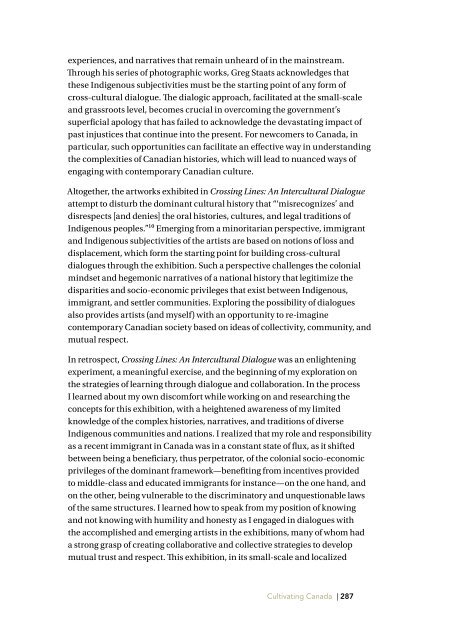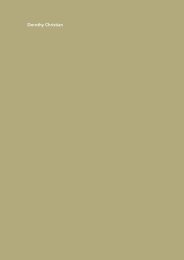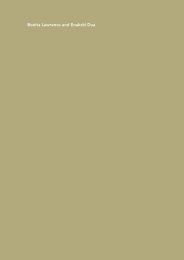Srimoyee Mitra - Speaking My Truth
Srimoyee Mitra - Speaking My Truth
Srimoyee Mitra - Speaking My Truth
- No tags were found...
Create successful ePaper yourself
Turn your PDF publications into a flip-book with our unique Google optimized e-Paper software.
experiences, and narratives that remain unheard of in the mainstream.Through his series of photographic works, Greg Staats acknowledges thatthese Indigenous subjectivities must be the starting point of any form ofcross-cultural dialogue. The dialogic approach, facilitated at the small-scaleand grassroots level, becomes crucial in overcoming the government’ssuperficial apology that has failed to acknowledge the devastating impact ofpast injustices that continue into the present. For newcomers to Canada, inparticular, such opportunities can facilitate an effective way in understandingthe complexities of Canadian histories, which will lead to nuanced ways ofengaging with contemporary Canadian culture.Altogether, the artworks exhibited in Crossing Lines: An Intercultural Dialogueattempt to disturb the dominant cultural history that “‘misrecognizes’ anddisrespects [and denies] the oral histories, cultures, and legal traditions ofIndigenous peoples.”10 Emerging from a minoritarian perspective, immigrantand Indigenous subjectivities of the artists are based on notions of loss anddisplacement, which form the starting point for building cross-culturaldialogues through the exhibition. Such a perspective challenges the colonialmindset and hegemonic narratives of a national history that legitimize thedisparities and socio-economic privileges that exist between Indigenous,immigrant, and settler communities. Exploring the possibility of dialoguesalso provides artists (and myself) with an opportunity to re-imaginecontemporary Canadian society based on ideas of collectivity, community, andmutual respect.In retrospect, Crossing Lines: An Intercultural Dialogue was an enlighteningexperiment, a meaningful exercise, and the beginning of my exploration onthe strategies of learning through dialogue and collaboration. In the processI learned about my own discomfort while working on and researching theconcepts for this exhibition, with a heightened awareness of my limitedknowledge of the complex histories, narratives, and traditions of diverseIndigenous communities and nations. I realized that my role and responsibilityas a recent immigrant in Canada was in a constant state of flux, as it shiftedbetween being a beneficiary, thus perpetrator, of the colonial socio-economicprivileges of the dominant framework—benefiting from incentives providedto middle-class and educated immigrants for instance—on the one hand, andon the other, being vulnerable to the discriminatory and unquestionable lawsof the same structures. I learned how to speak from my position of knowingand not knowing with humility and honesty as I engaged in dialogues withthe accomplished and emerging artists in the exhibitions, many of whom hada strong grasp of creating collaborative and collective strategies to developmutual trust and respect. This exhibition, in its small-scale and localizedCultivating Canada | 287
















